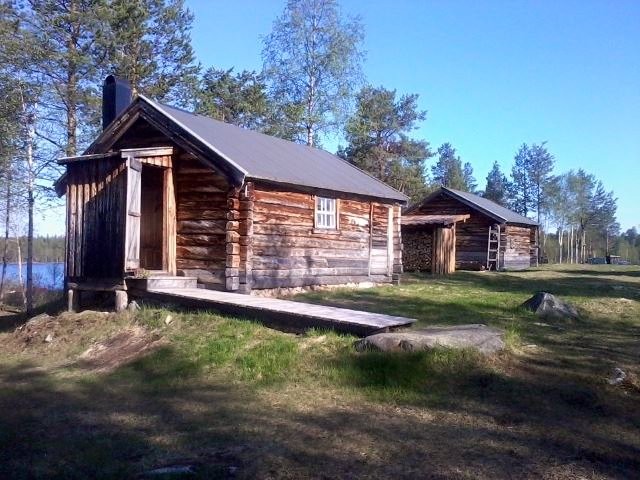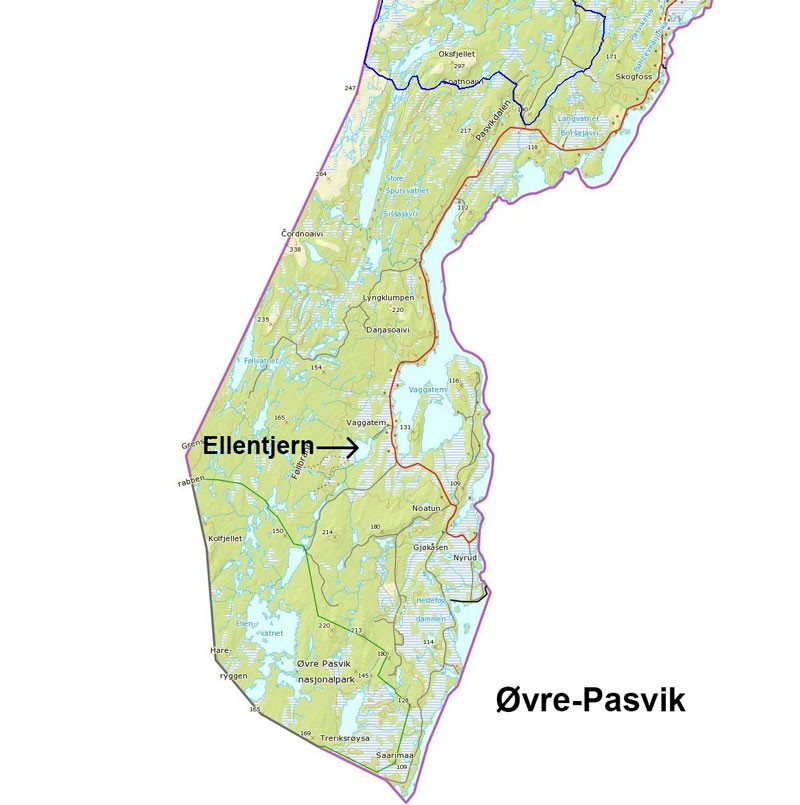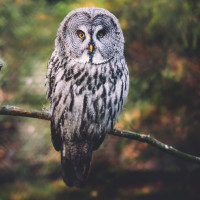Beschreibung
Ellentjern is an old habitated place in the pineforest, with hundred years old log-cabins close to a lake and an all-year open river. You can rent the cabins and order meals and guiding (see the link below).
In the cabin you have daily visits of Hakengimpel, Polarbirkenzeisig, Lapplandmeise, Unglückshäher and Eichelhäher. You find the Ellentjern place in the Birding Varanger guide book on page 48, site 1 (Book: https://biotope.myshopify.com)
The first Norwegian to take up residence in Upper Pasvik Valley was the ornithologist Hans Thomas Lange Schaaning. With his friend Johan Koren he came to Pasvik in year 1900 to attempt to make a living from hunting and collecting birds’ eggs and other natural history material. Schaaning also conducted research, and in the course of his twelve years in the region he made the area well known among the scientific community. Today the Pasvik Valley is well known among birdwatchers all over Scandinavia and every year ornithologists travel from many countries to experience its distinctive landscapes. A national park has been established nearby and several other areas are also protected.
The fauna is typical of the northern boreal area. The most common mammals are small rodents, Northern Hare (Lepus timidus), Red Squirrel (Sciurus vulgaris), Pine Marten (Martes martes), Red Fox (Vulpes vulpes) and Elk (Alces alces), as well as domesticated Reindeer (Rangifer tarandus). The Brown Bear (Ursus arctos) is fairly common, whilst Wolf (Canis lupus) and Wolverine (Gulo gulo) are both rare. New species such as American Mink (Mustela vison) and Muskrat (Ondatra zibethica) have become numerous, and another possible immigrant is the Racoon Dog (Nyctereutes procyonoides). However, so far only a few single individuals have been shot in the area.
The Pasvik river teems with fish. Eastern species such as Whitefish (Coregonus lavatetus), Greyling (Thymallus thymallus), Perch (Perca fluviatilis),Pike (Esox lucius) and Burbot (Lota lota) dominate. The expansion of hydroelectric power has destroyed the spawning areas for Atlantic Salmon (Salmo salar) and the well-known Pasvik Trout (Salmo trutta), but the river has consequently been re-stocked annually. The Vendace (Coregonus albula) was first found in 1989. Today it is quite common in the Pasvik River. The species probably came to Pasvik from Lake Enare.
The shallow parts of the Pasvik River are important bird areas. More than 200 bird species have been recorded in the reserve and the adjacent area. Lake Fjærvann is particularly important as a resting area for ducks and waders during early spring and late autumn. Singschwan and Saatgans occur in large groups. Other common species are Krickente, Pfeifente, Spießente, Schellente, Mittelsäger and Gänsesäger. The Zwergsäger is the most exotic duck which breeds in Pasvik. This species is common further east, but is a very rare breeder elsewhere in Norway. The latest addition to the local bird list is the Zwergmöwe which has been breeding in the area since 1999.
The most common birds of prey are Raufußbussard and Merlin. Both Seeadler and Fischadler breed and hunt near Lake Fjærvannet. Sumpfohreule and Sperbereule are the most common owls, but the most interesting is the Bartkauz which some years is quite common.
Bogs and marshes are breeding areas for a variety of waders, including eastern species like Dunkler Wasserläufer, Pfuhlschnepfe, Zwergschnepfe and Sumpfläufer.
Two other species which are usually objects of considerable attention from visiting birdwatchers are Wanderlaubsänger and Zwergammer. Both species occur scattered in low numbers in moist birch forest with dense vegetation.
Details
Zugang
100 km driving from Kirkenes. 2 km. from Vaggetem. Parking by the cabins and the feeder all year.
Terrain und Habitat
Wald , See , FlussBedingungen
FlachRundweg
JaIst ein Spektiv nützlich?
NeinGute Beobachtungszeit
Ganzjährig , Frühjahr , Winter , Sommer , HerbstBeste Beobachtungszeit
Frühjahr , WinterRoute
Schmaler PfadSchwierigkeitsgrad der Tour
DurchschnittlichErreichbarkeit
Auto , zu Fuß , Fahrrad , RollstuhlBeobachtungshütten oder -türme
JaZusätzliche Informationen
The 147 km long Pasvik River flows from Lake Enare in Finland to its outlet near Kirkenes. Seven power stations have been built along this river, which has a drop of 119 m. Most of the Pasvik River is therefore regulated, but in the central part of the nature reserve the river still follows its original course. The landscape consists of low mountains, moraine scenery and meltwater deposits from the Ice Age. The highest elevation is the Kalkuoaivve Mountain (357 m) on the eastern side of the river. In between there are flat plains containing many bogs and small lakes. The vegetation is dominated by pine forests and birch forests. The pine forest is actually an offshoot of the Siberian taiga and it makes the landscape very different from the surrounding mountain areas.



